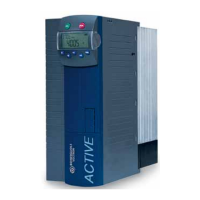
Do you have a question about the BONFIGLIOLI Act 201 and is the answer not in the manual?
| Brand | BONFIGLIOLI |
|---|---|
| Model | Act 201 |
| Category | DC Drives |
| Language | English |
Basic steps for mechanical and electrical installation. Guided commissioning supports parameter selection.
Describes all functions and parameters for adapting the inverter to specific applications.
Electrical drive components for industrial plants. Compliance with directives and standards required.
Warning about damaged components. Careful handling to avoid mechanical stress and electrostatic discharge.
Warning to discharge inverter before work. Compliance with standards and directives is mandatory.
Warning about potential unexpected motor start after power failure. Install protective equipment.
Warning about unauthorized opening leading to injury. Repairs only by authorized personnel.
Covers CE conformity, EMC directive, UL approval, ambient temperature, climate class, degree of protection, storage, functions, and parameterization.
Details technical specifications for control terminals X210A and X210B, and relay output X10.
Describes vertical mounting and provides dimensions for installation in electrical cabinets.
Discusses connection to public/industrial mains, commutating chokes, EMC filter compliance, and unearthed mains connection.
Provides measures for electromagnetic interference reduction, including panel installation, bonding, cable management, and components.
Guidelines for selecting conductor cross sections for mains, protective, and motor cables based on current and standards.
Provides tables with typical conductor cross sections for 230V and 400V connections.
Specifies selection of mains fuses and cable cross-sections according to EN 60204 and DIN VDE 0298 Part 4.
Table detailing maximum permissible motor cable lengths for unshielded and shielded cables without output filters.
Table showing maximum permissible motor cable lengths when using output filters.
Explains mains, motor, and brake resistor connections via plug-in terminals X1 and X2.
Details mains power connection for these models, including cable cross-sections and connection types.
Describes mains power connection for these models, including cable cross-sections and connection types.
Details mains power connection for these models, including wire cross-section and bolt size.
Describes mains power connection for these models, including terminal layout and bolt size.
Lists terminal assignments and descriptions for control terminal X210A.
Lists terminal assignments and descriptions for control terminal X210B.
Explains terminal assignments for sensorless control, including supply voltage and ground.
Describes terminal assignments for sensorless control, including supply voltage and ground.
Details terminal assignments for sensorless control with a technology controller for various applications.
Describes terminal assignments for sensorless field-oriented control of 3-phase machines.
Outlines terminal assignments for sensorless field-oriented control with a technology controller.
Details terminal assignments for sensorless field-oriented control with speed/torque control.
Describes terminal assignments for field-oriented control with speed sensor feedback.
Explains field-oriented control extended with a technology controller.
Details terminal assignments for field-oriented control with speed and torque control.
Explains the function of each key on the KP500 control unit: RUN, STOP, J, ENT, ESC, FUN.
Describes the different display elements: 7-segment displays, menu branches, status messages.
Explains how to navigate the menu structure and return to the main menu using arrow keys and ENT/ESC keys.
Details monitoring of actual value parameters and arrangement in data records.
Describes how to adjust parameter values and select operation modes.
Describes how to read stored data, handle initialization errors, and format memory.
Outlines the three main functions within the copy menu: FOR, ALL, and Act.
Explains how to select the data source (Src.) for the copy operation.
Details how to select the destination (dSt.) for the copy operation and start the copy process.
Describes the copy process, parameter checks, progress indication, and handling of errors or interruptions.
Lists error codes and their meanings related to copy operations, memory issues, and parameter transmission.
Explains how to activate parameter transfer mode via parameter Program(ming) 34.
Step-by-step guide to activate parameter transfer mode using the KP500 unit's keyboard.
Outlines the procedure for transmitting files from the control unit to the frequency inverter.
Details how to control the motor using the control unit, including necessary connections and parameters.
Safety checks before switching on mains voltage and inverter self-test procedure.
Explains the guided commissioning procedure for parameter settings relevant to the application.
Details setting rated parameters of the 3-phase asynchronous machine from the name plate or data sheet.
Explains setting a password for protection against unauthorized access.
Explains parameterizing start and stop behavior, including Auto Start, synchronization, and positioning.
Details starting behavior operation modes (0-Off, 1-Magnetization, 2-Magnetization + current impression) for sensorless control.
Explains flux formation in field-oriented control, including magnetization current and maximum flux-formation time.
Table showing different stopping behaviors based on Operation Mode 630 and start signals.
Explains feedback of current position relative to motor revolutions and reference signal accuracy.
Explains axle positioning requiring a feedback system and expansion module for evaluation.
Explains admissible load behavior and parameters for warning limits of short and long-term Ixt.
Discusses frequency inverter heating and parameters for warning limits of heat sink and inside temperatures.
Configures MFI1 as voltage, current, or digital input, linking to software functions.
Enables activation of a brake unit via digital control output based on start/stop behavior.
Discusses current limits to avoid inadmissible loading and prevent fault switch-off.
Ensures drive system is not overloaded by reducing acceleration ramp.
Implements generator energy into heat function for dynamic speed changes.
Reduces motor noises by changing switching frequency, with automatic reduction adjusting frequency.
Defines switch-on threshold of brake chopper based on DC link voltage.
Lists last 16 fault messages chronologically and shows the number of errors occurred.
Provides error codes (FXX) and their meanings, grouped by category like Overload, Heat Sink, etc.
Explains status indications via green/red LEDs and display elements RUN, WARN, FAULT.
Lists parameters for acceleration and deceleration ramps.
Lists parameters for technology controller, including operation mode, fixed frequency, and P-component.
Lists parameters for positioning operation mode, signal source, distance, signal correction, load correction, activity after positioning, and waiting time.
Lists parameters for current limit, torque limit, and power limit.
Lists parameters for Isq limit source and torque limit source.
Lists parameters for modulation controller: Reference Modulation, Integral Time, Operation mode, Ref. Imr Lower Limit, Control Deviation Limitation.
Lists parameters for encoder monitoring: Operation mode, timeouts.
Lists parameters for frequency upper/lower limits and their sources.
Lists parameters for max flux-formation time and current during flux formation.
Lists parameter for auto start operation mode.
Lists parameters for slip compensation: operation mode, amplification, max. slip ramp, minimum frequency.
Lists parameters for voltage controller: operation mode, mains failure threshold, reference mains support value, etc.
Lists parameters for current controller: amplification, integral time.
Lists parameters for field controller: Reference Flux, Amplification, Integral Time.
Lists parameters for slip frequency.
Lists parameters for speed controller: operation mode, amplification, integral time.
Lists parameters for acceleration pre-control: operation mode, minimum acceleration, mech. time constant.
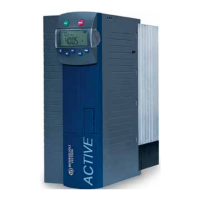
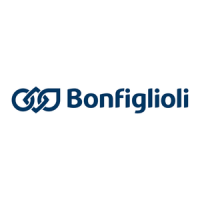




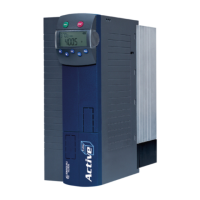
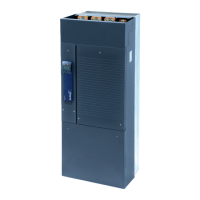
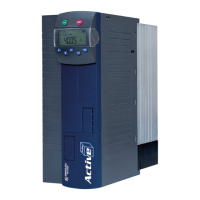
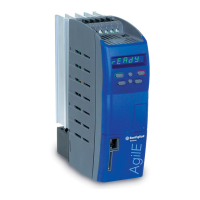

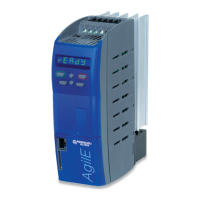
